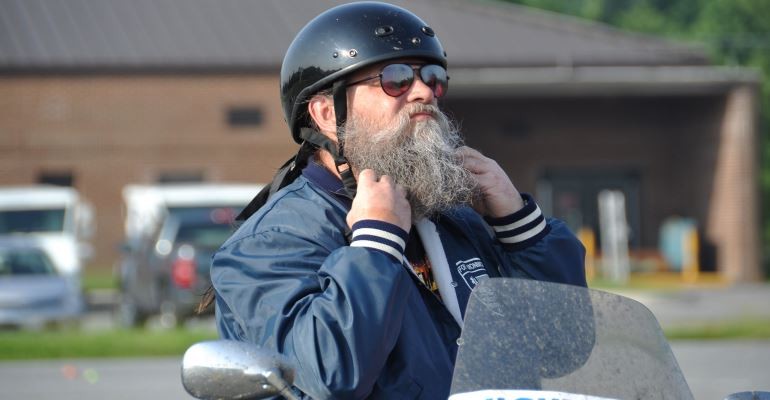
Motorcycle sales have increased more than 90 percent since 1991. There is a greater need for safety features for riders based on cutting edge technology.
New models of helmets are available now that have a built-in GPS system and cameras to show what is behind a rider without the need to turn around. These helmets also eliminate blind spots for safety when passing or turning.
In 2003, BMW spearheaded the market for having a heads up display in automobiles. The innovation does not end with cars. BMW is making a motorcycle helmet with the same technology and is in the pre-development stage. The Motorrad helmet includes a heads up display in the rider’s field of vision to eliminate the need to look down at the instrument panel and take their eyes off the road. The displays are programmable by the rider so that he only sees the information he wishes to while riding. This helmet was introduced at the consumer Electronic Show in January of 2016.
Cars have had airbags as an added protection for people for several years. This same sort of technology is being used into riding gear for motorcycles. Sensors in the jackets and vests detect impacts, which deploy an airbag to protect the chest and vital organs of the rider.
Newer boot designs include flexible impact technology for foot protection and to reduce the shock of impact when a rider is in an accident. Wearing proper fitting riding boots that are well constructed can prevent injuries that are related to inexpensive boots that do not protect a rider’s feet well.
LED headlights give a much clearer view of the rode for night rides and in bad weather. Some helmets are already using LED lights to increase rider visibility by auto drivers.
Super bikes have Bluetooth connections for Smartphones to enable easy use while riding. Some of the features of a new multimedia platform are to have the phone as an alternate dashboard with route recording and marking where the bike was last parked to help locate it.
Bluetooth-connected gloves allow riders to control a smartphone and the GPS by touching areas on the gloves.
As bike riders age, they may not be able to pick up the weight of a bike if it is on its side from an accident or falls over. Three-Wheelers are becoming very popular for the older crowd. They are easier to handle and even if the rider is lacking in balancing, it isn’t a concern. Newer trikes have two wheels in the front and one in the rear with a sleek design.
Europe has several new concepts in place for motorcycle safety that we will soon see coming to the USA as aftermarket items or on American bikes of the future.
Complete on-board diagnostic systems monitor cruise control, semi-active suspensions and tire pressure monitors. Bike tires that are under inflated cause unstable handling and slow steering, which can cause an accident. If the tires are over inflated, the contact patch where the tread meets the road is reduced for less traction, especially in corners.
Anti-locking brakes (ABS) have been standard issue on vehicles for several years to prevent accidents. The combination of ABS and stability control together help riders avoid low side disasters in cornering. Sensors collect data to calculate the correct amount of pressure needed on brake pads as well as the braking force difference between the rear and front brakes. Even in a full lean of a corner, the rider can apply full pressure on brake levers without the risk of dropping the bike. This safety practice is especially lucrative for new riders that are inexperienced.
Enjoy your rides, stay safe and remember, “Never ride faster than your guardian angel can fly.”
Comments